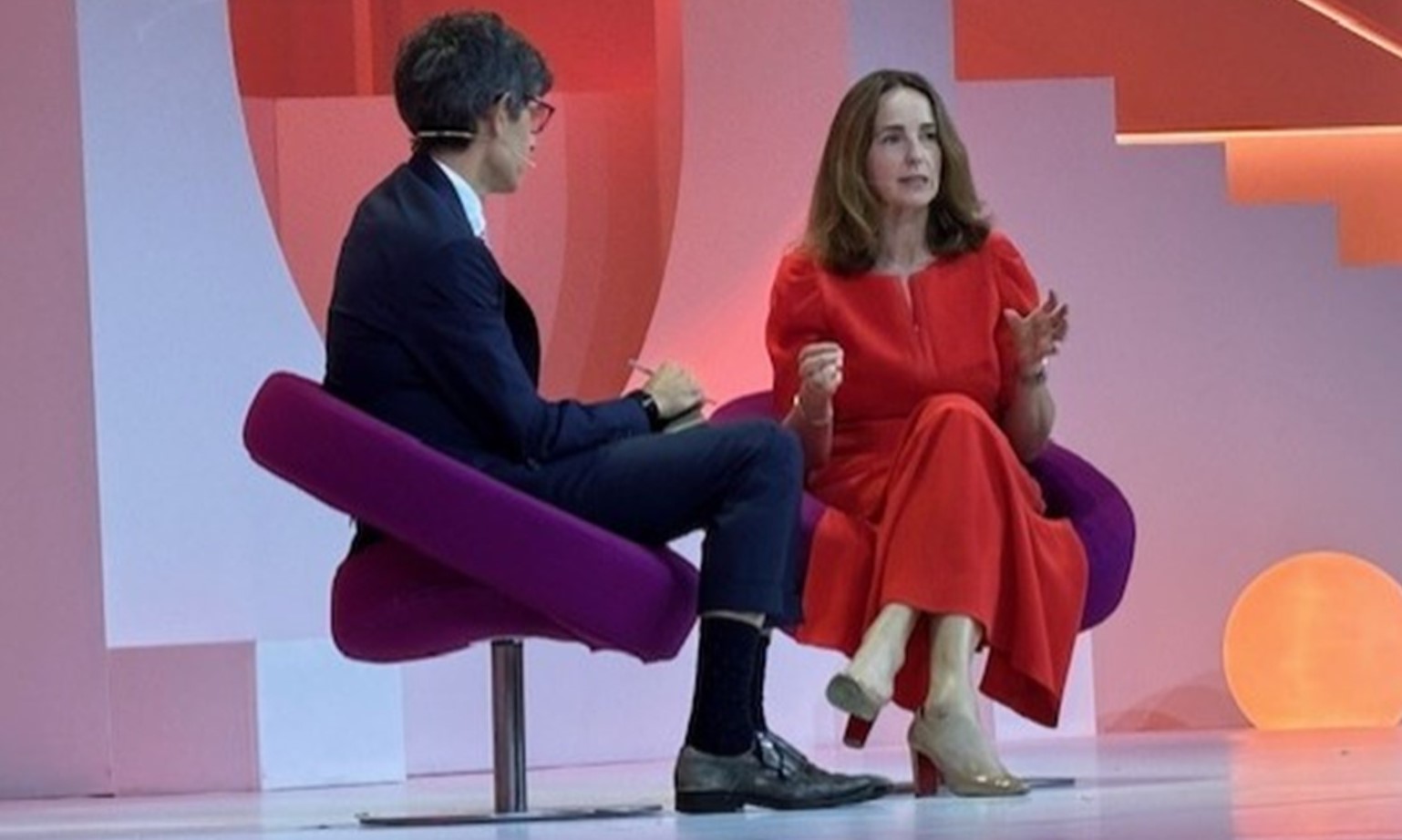OpenAI’s acquisition of legendary Apple designer Jony Ive’s artificial intelligence (AI) devices startup will lead to a new computing era similar to the leap from flip phones to the touchscreen smartphone.
That’s the prediction of OpenAI CFO Sarah Friar, who made the revelation during a fireside chat on Friday (June 13) at the VivaTech 2025 conference in Paris.
Friar drew parallels between OpenAI’s plans for AI devices and the technologies that ushered in past computing revolutions. For example, she compared the shift to moving from typing commands into a PC to an image-rich screen where people can click on icons, menus and buttons that made using a computer much easier for most people.
The CFO said the io acquisition, led by Ive and a small elite team, could define how people interact with AI in the years to come — moving beyond typing and tapping into something multimodal and intuitive.
“In every tech era, there’s always been a new substrate that really brought it to life,” Friar said. “In the world of the PC or the internet generation, it was the graphical user interface that really brought it to the world. … When the mobile generation happened, what really brought it to life was the touchscreen on the phone.”
Today’s AI use is still trapped in old modalities, she said, much like early mobile experiences simply shrunk desktop websites.
“Anything I imagine right now is probably going to seem a little cute in hindsight,” Friar added. “In the same way that 2½ years ago, ChatGPT would have felt like a dream — and here we are, 2½ years later, with half a billion people using it every single week.”
While Friar did not unveil the form factor of the new interface, she hinted it would depart radically from today’s keyboard-and-screen paradigm.
“I think for AI, there’s a whole new way to think about multimodality,” she said. “We’re going to stop thumb-talkers (texting) to begin with. We’re going to think about the fact that we hear, we see, we speak. And these models have an intelligence that can take all of that in.”
Read more: OpenAI Acquires Jony Ive’s AI Device Startup for $6.4B
Over $100 Million Per Head
The $6.4 billion deal for io was a big bet on a team of 50 people, equating to over $100 million per person. What vision was worth the price?
“It reminds me of mobile,” Friar said. “When mobile happened, all we did was take a website from a desktop and put it on a really small screen. … It totally missed the point of, ‘If I have location and I have mobility, I can give birth to Uber.’”
OpenAI is banking on Ive and his team to revolutionize how people use devices. The team has done it before: It includes key veterans of Apple’s most iconic products.
“There’s actually an incredible team that sits behind [Ive],” Friar said, citing Tang Tan, who “helped bring the supply chain to life and the design and the mechanics of the iPhone, of the Watch, of the AirPods.”
The addition of io, an AI hardware startup, while substantive, is just one of several ways OpenAI is changing its business model.
Due to rising demand for its AI models — 500 million people use its AI models weekly — OpenAI has extended its cloud relationships beyond Microsoft to include Oracle and CoreWeave, Friar said. It is also building its own data centers, through Stargate.
Asked whether OpenAI could soon become a publicly traded company, Friar said the company is undergoing a recapitalization and will restructure its for-profit arm into a public benefit corporation (PBC) — a move that could pave the way for an eventual IPO.
“We are in the midst of our recapitalization,” she said. “On the for-profit side, it will become a public benefit corp. And public benefit corps can indeed go public. … Every one of our competitors is a PBC. So we think it’s the right shift to be making.”
The nonprofit parent will remain integral, she added, as it provides mission alignment and governance.
“We have a for-profit entity — I work in a for-profit entity, albeit we need to get to the profit point,” Friar said, as OpenAI is still losing money despite a $10 billion annual revenue run rate.
“But the nonprofit is really important, because that’s where a lot of governance comes from, and it’s a big part of our mission alignment.”
Read more: Apple Loses Design Muse Jony Ive
Read more: OpenAI Added 1 Million Paying Businesses Subscribers Since February
Read more: OpenAI Aims to Offer AI Access Through ‘Ambient Computer Layer,’ Without Screens
Photo, from left: The Atlantic CEO Nicholas Thompson and OpenAI CFO Sarah Friar
